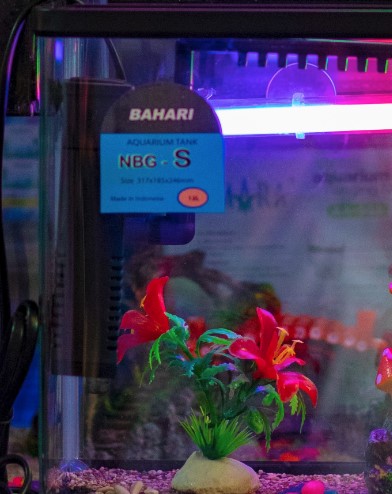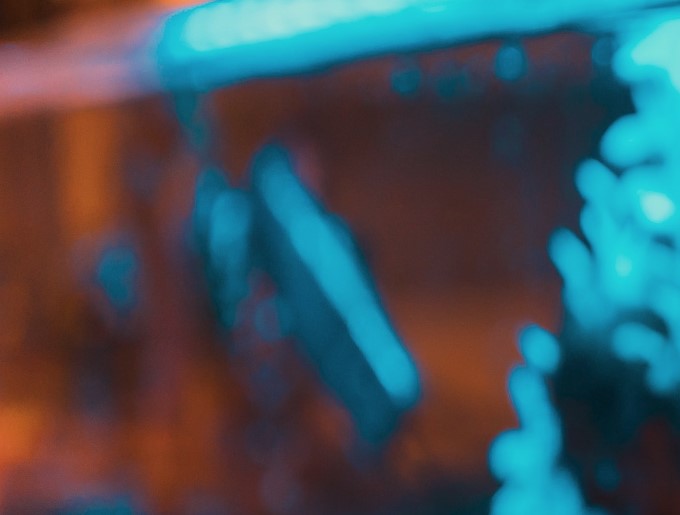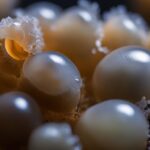Freshwater shrimps are fascinating creatures that I have enjoyed watching in my home aquariums for years. Unfortunately, they cannot tolerate low temperatures and need some special care when the mercury drops. To ensure your shrimp have a happy, healthy home and remain active all year round, it is essential to provide them with a heater. So in short, do shrimp need a heater? generally yes! Read through and I will explain in more detail as its not always that black and white.

Recommended Temperature for Shrimp
Different species of freshwater shrimp require different temperatures, so it’s important to know which type of shrimp you have and what their ideal temperature is in order to make sure they are getting the best possible care. Here are my recommendations after experimenting over the years and working with friends who have also done many tests.
- Cherry shrimp need a water temperature between 57 and 86°F, with an ideal temperature of 72°F.
- Caridina shrimp need a water temperature between 64 and 76°F, with an ideal temperature of 72°F.
- Neocaridina shrimp thrive in water temperatures from 56 to 85°F, with an ideal temperature of 73°F.
- Ghost shrimp need temperatures between 67 and 84°F for optimum health, with an ideal range at 73°F.
- Sulawesi shrimps usually require a water temperature between 76 and 85°F, although an even better range is 80°F.
- Vampire shrimp do best between 74 and 84°F with an ideal temperature at 80°F.
Knowing the exact temperature needed for your aquarium can often be difficult unless you have a thermometer that can accurately monitor the exact temp range.
However, through meticulous tank maintenance such as testing your water pH on a regular basis as well as regulating water temperature accordingly using heaters or other equipment when necessary will help keep you within the ideal temperature range for your shrimp.
Will My Freshwater Shrimp Die without a Heater
Shrimp are quite resilient and can survive without the use of a heater in their tank water. Provided that their environment has consistent temperatures and is within the recommended ranges, they will usually be able to return to normal once their environment is stable again.

It is important to monitor the water temperature to ensure it remains within the optimal range for their needs.
If a shrimp’s water temperature drops below its ideal range, it may become unwell or even die. If a sudden spike or drop in heat occurs, shrimp may go into a state of shock known as hypothermia. To help prevent this from happening and ensure your shrimp have an enjoyable living space, a aquarium heater can be used to maintain steady temperatures in an aquarium that are within optimal ranges.
The climate in your house matters
A heater in the shrimp tank is beneficial to ensuring optimal health and growth rates for your shrimp. Not only does it help improve the growth rate, but it also helps maintain the metabolism of shrimps. In colder water temperatures, shrimps become less active and tend to digest their food very inefficiently due to sluggishness of their metabolic processes. That can lead to insufficient nutrient absorption or even worse, death, while stunted growth only means that they aren’t getting enough food in general.
By using a heater to regulate temperatures in a thermal range that is suited for them, you are providing your shrimp with an environment that promotes a faster metabolism – both aiding in digestion of their food as well as converting more calories into energy producing activities like swimming for example. Having their appetites improved and metabolism boosted also means that you will have more beneficial bacteria (that feed off of uneaten food particles) thus making your tank much cleaner and healthier for all its inhabitants.
If you live in a cold climate, and don’t keep heating on when away, then you are a perfect candidate for a quality heater in your tank.
Breeding and Temperature
The lowers breeding cycle for aquarium shrimp is directly related to water temperature. As the water temperature rises, the shrimp become more inclined to breed and can lead to an infestation in the tank. This proliferation of the species can quickly take over a tank if not monitored closely, leading to overcrowding and stressing other inhabitants in the tank. An unbalanced ecosystem can also occur if left unchecked and this can lead to trouble with the water quality’s balance, such as an excess of ammonia or nitrates that can harm your livestock.
In order to contain any potential issues related to overbreeding, it is important to monitor all levels of activities within your tank, such as checking temperatures frequently impact the rate of reproduction in shrimp. Furthermore, reducing food amounts and regularly removing small clutches of unhatched eggs can help keep the population under control and will help maintain a balanced ecosystem within your tank. Taking precautionary measures like these can ensure that you have healthy aquarium inhabitants free from any kind of infestation.
Keeping a stable and steady temperature will help increase their shrimps’ health, robustness and overall survival rate. A proper temperature will also help them reproduce better, allowing them to produce more developed and strong offspring. With a proper environment, the shrimp will be well-equipped to survive potential natural disasters or difficult external conditions that could potentially harm them and reduce their chances at propagating further generations.
On the other hand, when the temperature is too low or too high it can detrimentally affect the quality of their offspring. When it’s too cold shells can become deformed, leading to weak legs or arms in the newly hatched shrimp, making it much more vulnerable when starting out in life. If temperatures are too high on other hand then shrimp may reproduce more than necessary, resulting in smaller and weaker individual babies with no chance of succeeding. Therefore regulating ambient temperature accurately is crucial for shark reproduction and ensuring healthy offsprings that are ready to take on its own role in life.
Reasons to not use a heater with Shrimp
Heaters can get stuck on, which can cause the water temperature to rise too high for the shrimps’ survival.
Too much heat can affect their metabolism and reproduction, as well as causing them to become exhausted and even die from it. Therefore it is important to ensure that all heaters have an automatic shut off function, or be able to manually turn them off when needed. Additionally, if you have a larger tank then running a heater could be expensive due to long run times with higher wattage required in order to keep stable temperatures throughout all areas of the tank.
I recall years ago, I had a small tropical fish tank, and I came home and all fish were dead. The heater had failed and tank was cooking.
Why Use a heater a heater for other aquarium life
Using a heater in your aquarium can be quite beneficial for many reasons. Heating your aquarium helps to keep the parameters more stable, which is beneficial for aquatic plants and fish. When it comes to fish keeping, having a stable environment can make all the difference when it comes to providing a healthy home for its inhabitants. Aquariums tend to experience significant temperature fluctuations if left unheated, causing a stressful environment for the fish and other invertebrates within it. A heater can help level out this variation and create an optimal state of equilibrium that is perfect for most species of fish.
The heating element provided by the heater also encourages breeding between fish as they like warm water temperatures while also promoting stronger spawning instincts than cooler conditions would typically afford them. Not only that, having a heated aquarium also provides extra support to essential tank processes, such as biofilm growth or detritivore reproduction, which are integral components of any successful tank ecosystem. The process of biofilm growth is especially dependent on water temperature; often requiring warmer water temperatures than other organisms might prefer in order to take full advantage of the system’s nutrients and bacteria levels. Having a heater can provide ideal conditions required for full-scale colonisation of these vital ecosystems within one ‘s aquarium.
Types of Heaters for Shrimp
Submersible heaters are waterproof, making them ideal, these reduced-size units can be placed directly inside a tank or suitable container, such as a filter housing unit. Immersible heaters, on the other hand, are not waterproof, so it is not recommended that they be completely submerged in water. Instead, these heaters are best used in areas where water levels remain constant so that it doesn’t pose any danger to the fish or shrimp within the tank.
Filter heaters are a great choice for aquarium owners looking for an easy, yet effective, way to adjust and maintain the temperature of their tank. Rather than impacting on the look and design of your tank with bulky devices, submersible filter heaters are tucked away in external filters so that they’re barely visible when installed correctly.
Filter heaters another great option when looking for an easy, yet effective, way to adjust and maintain the temperature. Rather than impacting on the look and design of your tank with bulky devices, submersible filter heaters are tucked away in external filters so that they’re barely visible when installed correctly.
In Summary – Do Shrimp Need a Heater?
Making the decision about whether or not your shrimp need a heater can be interesting and it’s essential to have all the information before making any changes. By doing proper research and monitoring changes in temperature closely, you’ll be able to successfully your Shrimp with a comfortable environment and optimize their overall health and wellbeing.
If any doubts or questions arise while caring for your shrimp, don’t hesitate to reach out and I will be more than happy to help.







